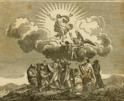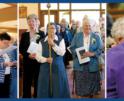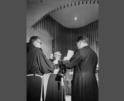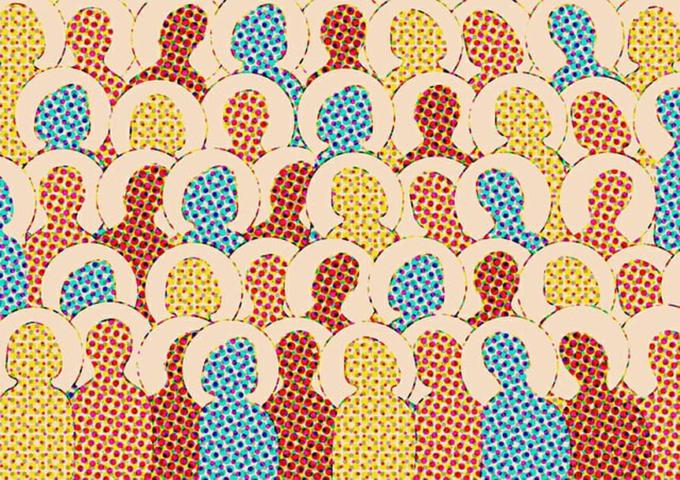
Culture
. . . The entire point of the Christian "journey" is to cooperate with God's grace so that we grow into the kind of people who will feel at home at the Wedding Feast of the Lamb: overflowing with gratitude for the invitation, and not feeling like party-crashers.
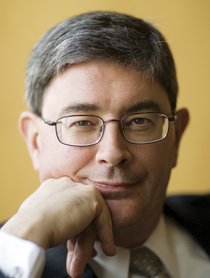
Weigel
Pope Benedict XVI often said that, in today's skeptical and cynical world, the saints make a more persuasive case for the truth of Christianity than the most sophisticated arguments. One has to wonder, then, why the Working Document ("Instrumentum Laboris," or IL) for October's Synod on Synodality is virtually devoid of references to the saints, or to the Church's heritage of holiness over two millennia, or to the holy ones who surround us in this third millennium of "journeying together" (a favorite synodal trope). Perhaps that has something to do with the IL's seeming lack of interest in the goal of the Christian journey: eternal joy within the light and life of the Holy Trinity, in that never-ending celebration that Revelation 19 calls the Wedding Feast of the Lamb.
This is all the more odd in that the synodal process underway since 2021 is often presented by its managers and proponents as an expression and development of the Second Vatican Council. Yet in the Council's Dogmatic Constitution in the Church -- one of its two foundational texts -- we find an entire chapter on "The Universal Call to Holiness," in which the Council fathers teach that holiness is every Christian's baptismal vocation. Sanctity is not for the church sanctuary alone. Saints are not only those supremely good people whom the Church honors with the title "saint." Each of us must become a saint to fulfill our human and Christian destiny.
C.S. Lewis anticipated this conciliar teaching when he noted that most of us, suddenly caught up to heaven, would probably feel a little uncomfortable. Why? Because we are not yet saints. And saints, Lewis suggested, are those who can live comfortably with God forever. How can the saints live that way? Because, in the Eastern Church Fathers' striking image, they have been "deified." So the entire point of the Christian "journey" is to cooperate with God's grace so that we grow into the kind of people who will feel at home at the Wedding Feast of the Lamb: overflowing with gratitude for the invitation, and not feeling like party-crashers.
Vatican II taught also taught that sanctity is all around us. Convinced of this truth, John Paul II reformed the process by which the Church recognizes the saints God has made. In the 1983 apostolic Constitution "Divinus Perfectionis Magister" (The Divine Teacher of Perfection), John Paul changed the beatification/canonization process from an adversarial legal proceeding to a scholarly historical investigation. The adversarial process sought to disprove the sanctity of an individual proposed for beatification or canonization, with the famous "Devil's Advocate" acting as a kind of post-mortem prosecutor making the case against the candidate. If the candidate survived this inquisition, his or her sanctity would still have to be confirmed by a miracle. In the new process initiated by John Paul II, the goal is to demonstrate the sanctity of the candidate through the testimony of witnesses, through a serious, critical biography of the candidate -- and then, of course, through a confirming miracle.
The point of streamlining the beatification/canonization process was to give the Church more and different examples of those who had answered the universal call to holiness than was possible under the old process. John Paul believed that we need the example of the saints -- especially the saints of our own time -- in order to live our baptismal call to sanctity here and now. The saints, in his view, are our most important companions on the pilgrimage of Christian life. The saints illustrate the many legitimate pathways of Christian discipleship. The saints also demonstrate that those diverse pathways have a common origin -- Jesus Christ, the teacher and model of perfection -- and a common terminus: communion with the Thrice-Holy God.
If October's Synod on Synodality is going to contribute to the evangelization of a world sorely in need of holiness, and if it is going to accelerate the ongoing reform of the Church so that Catholicism more effectively displays such holiness, then the Synod is going to have to take the saints far more seriously than its Working Document does. If the Synod's "facilitators" don't invite its language-based discussion groups to explore the many paths to holiness evident in Catholicism today, providing examples of those who have recently trod or are now treading those paths, then the Synod's participants should do so on their own. Let the Synod talk about what's right with the Church as well as about what's wrong.
For if "synodality" is not about fostering sanctity, then it is institutional ecclesiastical navel-gazing, and a scandalous waste of time and money.
- George Weigel is Distinguished Senior Fellow of the Ethics and Public Policy Center in Washington, D.C.
Recent articles in the Culture & Events section
-
Building a legacyMichael Reardon
-
Scripture Reflection for Nov. 24, 2024, Solemnity of Our Lord Jesus Christ, King of the UniverseDeacon Greg Kandra
-
Seeds of graceMolly M. Wade
-
The dedication of St. Francis Chapel in the Prudential CenterThomas Lester
-
Honeybees are taking over for canariesDeacon Timothy Donohue


